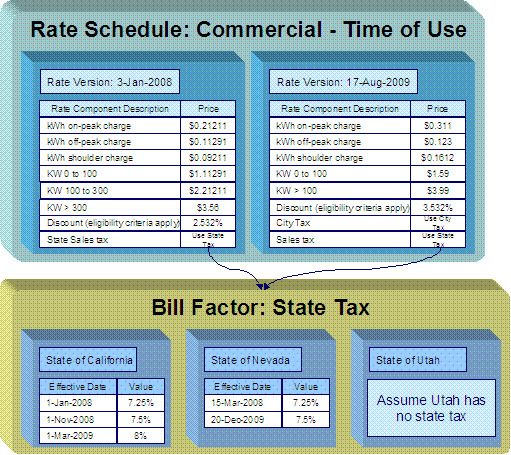All Component-Based Rates Share a Common Structure
All rates share a common structure as illustrated in the following sample rate:

This rate is constructed using the following components:
- Every rate has a single rate schedule that contains information about the rate that doesn't change over time. For example, the rate's description.
- A rate's effective-dated calculation algorithms are stored in a rate version. Every rate schedule has at least one rate version. Multiple rate versions exist when something about the algorithms changes and it's important to keep the prior version in order to recalculate historical bills. The rate shown above has 2 rate versions; one effective on 3-January-2008, the other effective on 17-August-2009.
- A rate version's calculation algorithms are stored in rate components. Every rate version will have at least one rate component. The number of rate components linked to a rate version is dependent on the complexity of the calculation rules. We have seen very simple calculation rules that need only a single rate component; we have seen others that require over 150 rate components. You will find the construction of rate components to be the most challenging task of the setup process.
- Bill factors are used to specify the amount to charge when the amount is the same for many rates. Notice that both of the above rate versions reference the prevailing "state tax" bill factor rather than specifying the specific tax percent. This allows the tax rate to be maintained in one place.
Note:
Bill factors have many uses. Bill factors have many uses in addition to specifying tax rates. Refer to An Overview Of Bill Factors for more information
